The cryptographic service of the Soviet Union. "Hellish machines." Part of 4
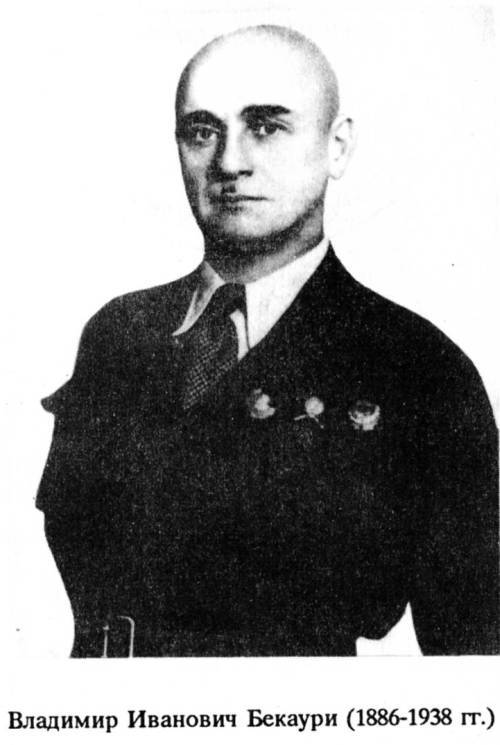
The head of the bureau, Vladimir Ivanovich Bekauri, in 1927 directly oversaw the development of the BEMI device (Bekauri and Mitkevich), which was designed to control landmine explosions at a distance of about 700 km using powerful broadcasting stations. In 1931, the first prototypes of disk encryptors appeared, and in 1936 the secret encryption equipment “Screen” was tested. For the interests of the Air Force in Ostekhbyuro developed a high-quality noise-resistant radio communications equipment "Emerald", which was equipped with long-range bombers and reconnaissance. Emeralds were also used to connect the Air Force headquarters with each other. However, the most famous were the projects of radio-controlled mines, tanks, torpedoes, aircraft, as well as further improving the theme of "BEMI." Such a technique during the war was a complete surprise for the German troops - for a long time they could not understand the causes of unexplained explosions deep behind their troops. Understanding came with new intelligence that described the new Russian engineering ammunition. Hitler’s secret order, which fell into the hands of Russian special services in December 1941, said:
One of the resonant applications of the new development was the 14 explosion of November 1941 of the year in the basement of the house №17 Dzerzhinsky in Kharkov 350-kilogram landmine. The signal to the radio-controlled mine F-10 was sent from the Voronezh Radio Broadcasting Station on 4.20 in the morning when the city commandant, Major General Georg von Braun, peacefully slept in his residence a few meters from a powerful mine. By the way, von Braun was close relatives of the famous German designer, who became very popular after the war in the United States. The Germans extracted several tons of such “gifts” from the basements of occupied Kiev. Most of the government buildings, theaters, the headquarters of the NKVD, Khreshchatyk and the Assumption Cathedral were mined. One of the Kiev workers pointed out to the invaders a Lenin Museum, from the basement of which German sappers extracted at least 1,5 tons of trinitrotoluene, which were supposed to lift the block to the air according to a coded radiogram. However, this only partially helped, and on September 24 of the year Kreshchatik and its surroundings soared. Mines detonated with a predetermined sequence, destroying the field commandant's office, gendarmerie, warehouses and a cinema. A month later, on October 1941, the radio bomb exploded in Odessa, which was occupied by Romanian troops, destroying the generals and officers of the 22 th Infantry Division of the 50 th Romanian Army under the rubble of the NKVD building before 10. The main goal was the division commander, General Ion Glogoganu, who was one of the many victims of this sabotage.
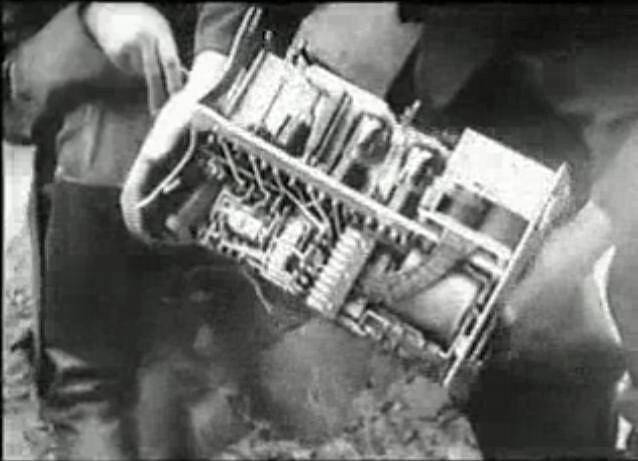
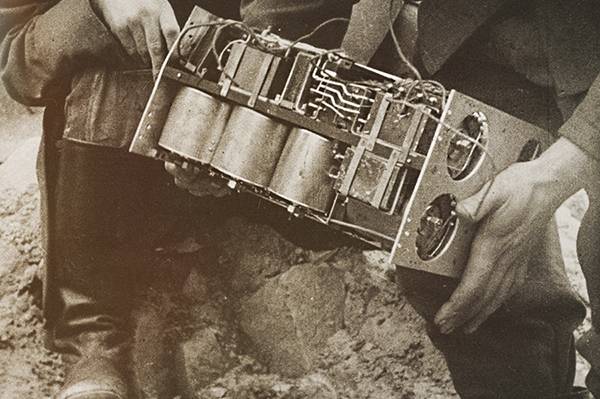
The control unit object mines F-10 without housing
A typical Soviet radiofugas was a box 40x38x28 cm, which was located explosive radio F-10 (the Germans called it Apparat F10), and the power of the charge could vary within wide limits. Each such tab was attached radio antenna length 30 meters, which is usually buried. This became the Achilles' heel of domestic development - the Germans simply dug a suspicious area from all sides with a ditch on 50-70 cm and often ran across a receiving antenna. It was powered by an eight-lamp radio receiver from a standard rechargeable battery, the capacity of which was usually enough to work in reception mode from 4 to 40 for 24 hours. In addition, the complete set of charge necessarily included a radio signal decoder “Device A”. The blasting control unit could be located both in the immediate vicinity of the charge, and at a distance of up to 50 meters, connected to the explosive by an electric-explosion line. Undermining such a tab could transmit equipment is not below the divisional level. One of these was the operational radio station PAT, which has an output power of one kilowatt and a range of up to 600 km. The company also provides a radio station RAO-KV with 400-500 W with a range of about 300 km, and the weakest RSB-F on 40-50 W with a range of up to 30 km. These radio stations operated in the 25-120 meters range (short and medium waves). The batteries of the battery lasted no more than four days of constant work - it affected a lot of losses on the intensity of the radio tubes. For this reason, a clock mechanism was introduced into the mine, which periodically turned off the power. In the operation mode, when 150 seconds mine is in a combat position, and 150 seconds are “resting”, the standby time is 20 days. In the 5 position (5 minutes of work and 5 minutes of rest), the life increases to the maximum possible 40 days. Naturally, taking into account the nature of the clockwork, the coded radio signal for an explosion should be given at least 1 minutes (continuous operation), 6 minutes (in the 150 mode of seconds) and 10 minutes (in the rhythm of 5 minutes on - 5 minutes). Mina F-10 could be set to self-explode from a time-delay fuse - on 10, 16, 35, 60 or even 120 days. For reliable operation of the charge, the instruction recommended installing 2-3 mines on the site immediately. On the blast initiation principle, the Finnish sapper Jukka Lineen wrote: “The blaster acts on the principle of three successively included tuning forks, which are made to vibrate with a triple audio signal (pause melodies of Kharkov and Minsk civil broadcasting stations were used)”. For the first time, the Red Army tested engineering munitions of the new 12 design on June 1942 of the year on the Northern Front, when the left of the village of Strugi Krasnye, Pskov Oblast, was undermined. Three mines of 250 kilograms of TNT were exploded at once in each - the signal of detonation was sent from a distance of 150 km.
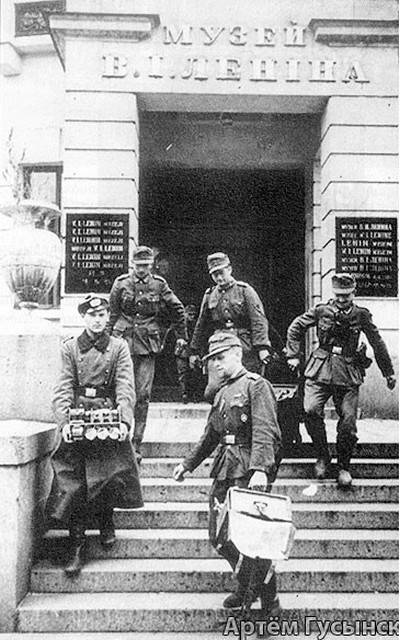
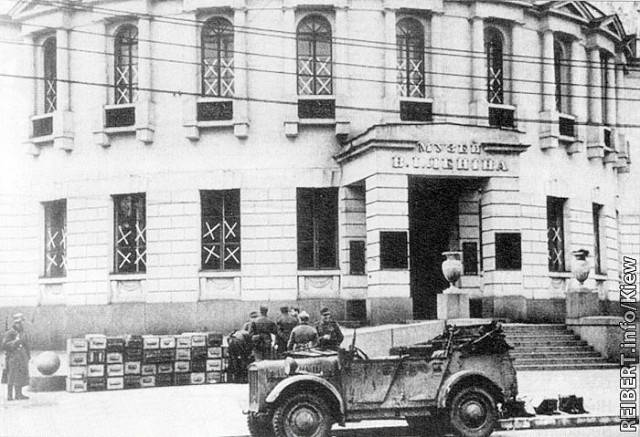
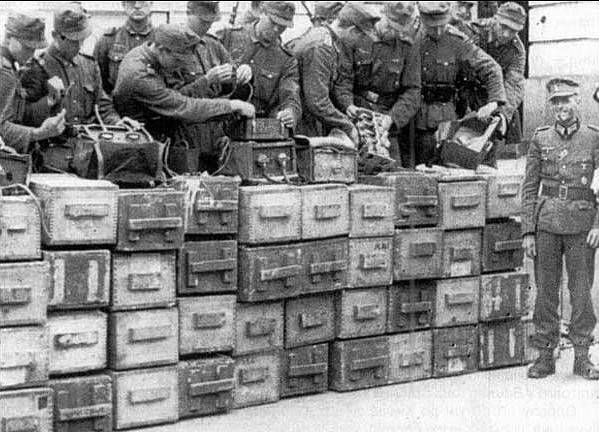
The Germans endure the F-10 radio fights from the Kiev Museum to them. V.I. Lenin, 1941 year
At the end of 1941, the Germans, in their own skin, understood what they were dealing with, and organized a campaign to find and neutralize mines such as F-10. To begin with, important buildings in the occupied territory were tapped with special acoustic equipment Elektro-Akustik, which allowed to catch the ticking of the clock mechanism up to 6 meters. Also, the Germans got an instruction to the radio-mine, which made it possible to organize jamming by a sapper company consisting of 62 people who were armed with several 1,5-kilowatt transmitters and receivers. It is noteworthy that the typical trick of the Soviet special sappers, who worked with the F-10, was the installation of a conventional pressure mine on top of the radio tab. Obviously, this effectively eased the vigilance of the Germans - in Kharkov, from the 315 mines of the F-10 mines installed by the retreating Soviet units, the Germans were able to neutralize only the 37.
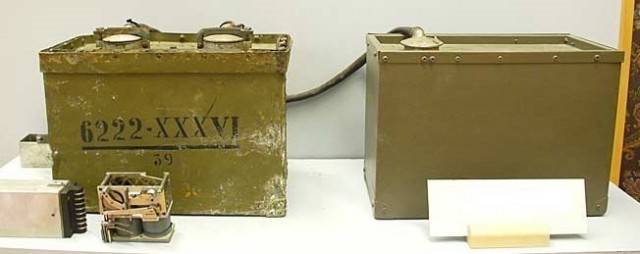
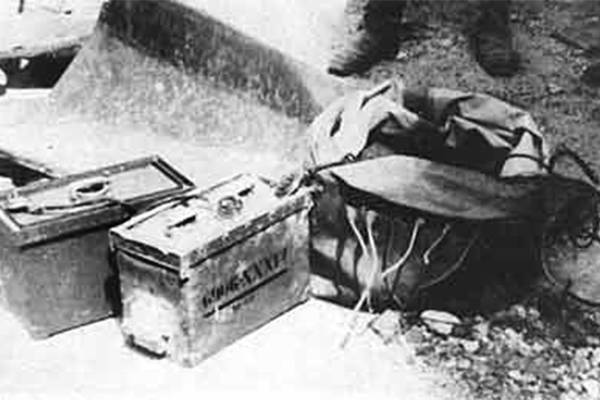
Radiofugas receiver and battery. The bottom photo shows the numbers 6909-XXXIV. Regarding the first "Arabic" number, there are no assumptions, but "Roman digitization", according to the Germans, means the conditional number of the length to which the mine is set. So, XXXIV can talk about the frequency 412,8-428,6 kilohertz. If the number on the box was larger than the XVIII, then this meant that the "hellish machine" was set up for special long-range control and was highly sensitive.
In the memoirs of the marshal of the engineering troops V. K. Kharchenko you can find the following words:
Until 1943, the Red Army "nightmare" the rear of the invaders with radiomines, and their creator V.I. Bekauri did not live to see the triumph of his own brainchild - in 1938, he was shot on charges of spying for Germany. All charges were dropped only in 1956 year.
At the end of the story, it is worth quoting General Helmut Weidling about the domestic radiofugas, which were recorded in Berlin in May 1945: “We didn’t have the corresponding equipment, and as for the radiofas, your engineers were far ahead of ours ...”
Продолжение следует ...
- Evgeny Fedorov
- defendingrussia.ru, borisfen70.livejournal.com
- The encryption business of the Soviet Union. 3 part
The encryption business of the Soviet Union. 2 part
The encryption business of the Soviet Union. 1 part
Information